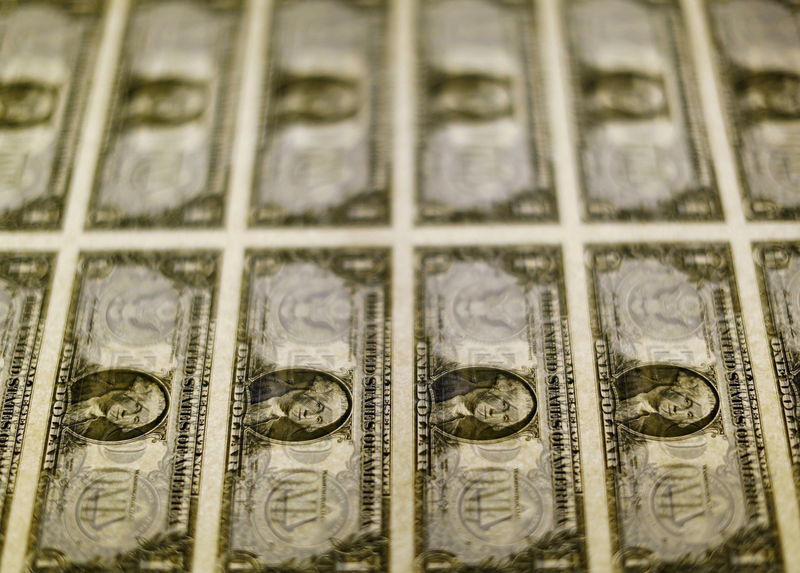Investing.com - The dollar held onto gains against the other major currencies on Monday, but the greenback’s upside was expected to remain limited amid expectations for tighter monetary policy by major central banks.
In comments last week the heads of the European Central Bank, the Bank of England and the Bank of Canada adopted a more hawkish view on monetary policy, indicating that they were getting ready to join the Federal Reserve in policy tightening.
Hawkish signals from foreign central banks contrasted with doubts over whether the Fed will be able to hike rates again this year given a recent batch of weak U.S. economic data and growing skepticism that the Trump administration will be able to deliver on its pro-growth agenda.
EUR/USD dropped 0.42% to 1.1379, off Friday’s 13-month peak of 1.1448.
GBP/USD declined 0.45% to 1.2969, pulling away from last week’s six-week high of 1.3032.
Research group Markit said that its U.K. manufacturing purchasing manager’s index fell to 54.3 last month from a final reading of 56.3 in May. Analysts had expected the PMI to decline to 56.5.
Elsewhere, USD/JPY gained 0.39% to 112.84, while USD/CHF rose 0.29% to trade at 0.9606.
The yen briefly rose after Japanese Prime Minister Shinzo Abe's Liberal Democratic Party suffered an historic defeat in an election in Tokyo on Sunday, in a vote that could be a harbinger for national elections.
The Australian and New Zealand dollars were weaker, with AUD/USD down 0.38% at 0.7660 and with NZD/USD sliding 0.44% to 0.7300.
Earlier Monday, data showed that the China Caixin manufacturing PMI rose to 50.4 in June from 49.6 the previous month. Analysts had expected the index to tick down to 49.5 last month.
China is Australia’s biggest export partner.
Meanwhile, USD/CAD added 0.25% to trade at 1.2992.
The U.S. dollar index, which measures the greenback’s strength against a trade-weighted basket of six major currencies, was up 0.39% at 95.75, off Friday’s eight-month trough of 95.22.
